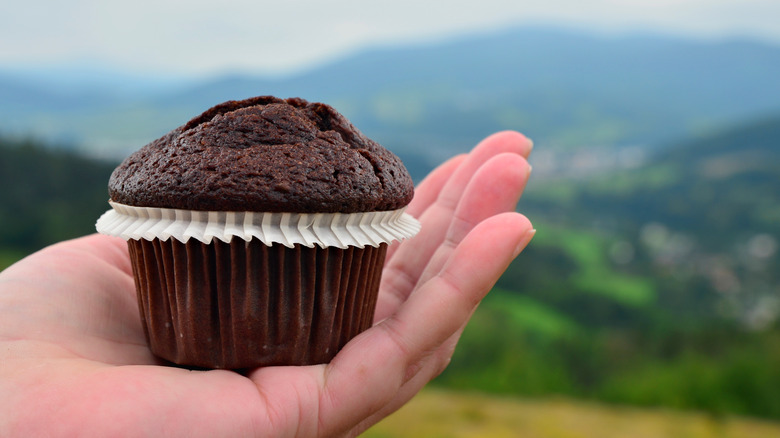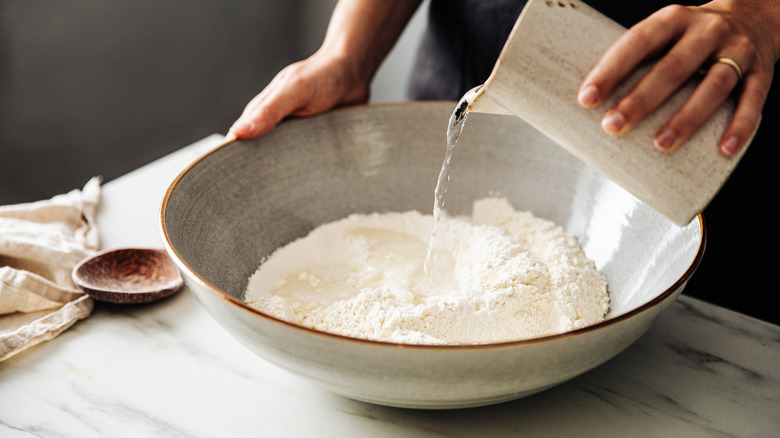Adding More Liquid Is Key To Prevent Dry Baked Goods At High Altitude
If you've ever gone up into the mountains and felt a shortness of breath or had a rollerball pen explode on an airplane, you're well aware of the effects altitude can have on humans and inanimate objects. The higher the altitude, the less air pressure pressing down on earth.
Baking is a science that requires precision and timing to have all ingredients working together in order to get that perfect fluffy muffin or doughy bread. The change in atmospheric pressure from sea level to high altitude makes the science of baking a little less exact and a bit on the finicky side. Once you reach a certain height, adjustments need to be made to any baked good recipe to account for the drop in pressure. Adding more liquid happens to be an important modification if you want to avoid a crumbly, dry cookie. Just how much more should you add? That's where the finicky part comes in, but there are some general rules of thumb to follow.
How to adjust baked good recipes for high altitude
The lower air pressure that comes with high altitude speeds up the rate of evaporation. The molecules of the air aren't pushing down as hard on the surface of the water as they are down at sea level. This means the water molecules will be further apart, thus increasing the rate at which they evaporate. The air is also drier and thinner. Anything containing moisture, like a bag of flour, will have less moisture at altitude than it does at sea level. Because of this, a dry flour will soak up more liquid and leave you with dry baked goods.
To counteract this, you'll need to up the amount of liquid you use if you're baking at an elevation above 3,500 feet. Generally speaking, you can add 9% more liquid when baking at 3,500 feet elevation, 15% for 5,000 feet, and 22% for 7,500 feet. If math is not your thing, perhaps an easier work around is to gauge the feel of the dough or batter as you're working. If it seems dry, too thick, or crumbly instead of coming together evenly, add more liquid a tablespoon at a time until it reaches a better consistency.

